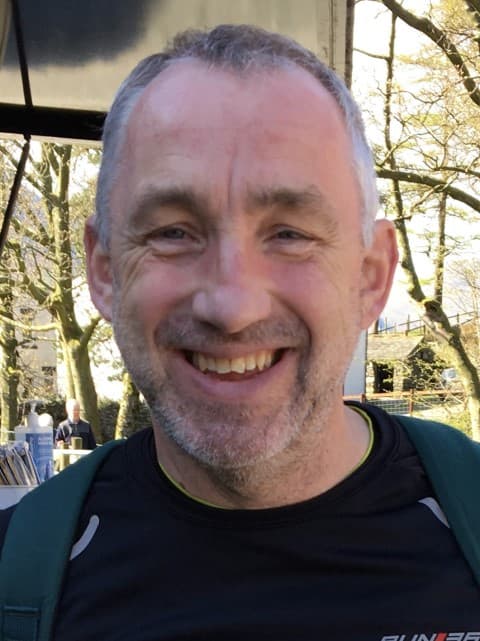Roger is a Senior Lecturer in Psychology who joined Loughborough University in 2017. Roger graduated from the University of Wales, Bangor, in 1995, with a first class BA (Hons) in Psychology, after which he worked as a Research Psychologist at Rivermead Rehabilitation Centre before returning to Bangor as a research assistant, registering for a part-time PhD, in 1998. After completing his PhD in 2001, Roger worked at the University of Nottingham as a research associate, lecturer and then associate professor before joining Loughborough University in 2017.
Roger's main research interests are in the field of motor control, sensorimotor integration, body illusions and body representations, particularly with respect to disorders of perception and action and their rehabilitation. He also created the MIRAGE mediated-reality device in 2008 and won Illusion of the Year in 2012.
Roger’s main research interests are concerned with how the different senses are combined to make sense of the body and the world around it. In particular, he is interested in how poor sensory integration can affect health and wellbeing and lead to disorders of body perception and action. Much of his recent research has focused on manipulating sensory input, often in the form of body-based illusions, to modulate pain or investigate deficits in autism as well as trying to understand everyday sensory and motor processes across the lifespan.
He enjoys creating and demonstrating novel body illusions, some of which can be experienced in science centres such as the Newcastle Centre for Life where you will find Roger’s MIRAGE illusion box that can appear to stretch fingers or make hands disappear.
Roger has active research collaborations with the University of South Australia, University of Utrecht, Royal National Hospital for Rheumatic Diseases (Bath), University of Reading, University of Lincoln, and University of Nottingham.
Many of Roger’s external activities involve public engagement, helping people to understand his field of research and to appreciate why it is useful. A selection of these activities are listed below:
- Wellcome Collection; In pursuit of pain
- Big Bang Fair Science and Engineering Fair
- Edinburgh International Science Festival
- Cheltenham Science Festival
- Royal Institution; riLates
- British Psychological Society; Weird Psychology
- Oxford University Museum of Natural History; Brain Diaries Exhibit
- Newcastle Centre for Life; The Brain Zone Exhibit
- Edinburgh, Camera Obscura; Multisensory Illusions Exhibit.
More information about Roger's public engagement work can be found on the Mind Body Illusions website.
Featured publications
A representative selection of Roger’s publications which capture his recent research interests and collaborations are given below:
- Greenfield, K., Newport, R., Smith, A. D., Carey, M., & Ropar, D. (2017). Body representation difficulties in children and adolescents with autism may be due to delayed development of visuo-tactile temporal binding. Developmental Cognitive Neuroscience.
- Jackson, S. R., Condon, L., Newport, R., Pears, S., Husain, M., Bajaj, N., & O'Donoghue, M. O. (2017). Optic ataxia and the dorsal visual steam re-visited: impairment in bimanual haptic matching performed without vision. Cortex.
- Ratcliffe, N., & Newport, R. (2017). The effect of visual, spatial and temporal manipulations on embodiment and action. Frontiers in human neuroscience, 11.
- Perera, A. T. M., Newport, R., & McKenzie, K. J. (2017). Changing hands: persistent alterations to body image following brief exposure to multisensory distortions. Experimental Brain Research, 235(6), 1809-1821.
- Newport, R., Wong, D. Y., Howard, E. M., & Silver, E. (2016). The Anne Boleyn Illusion is a six-fingered salute to sensory remapping. i-Perception, 7(5), 2041669516669732.
- Greenfield, K., Ropar, D., Smith, A. D., Carey, M., & Newport, R. (2015). Visuo-tactile integration in autism: atypical temporal binding may underlie greater reliance on proprioceptive information. Molecular Autism, 6(1), 51.
- Gilpin, H. R., Moseley, G. L., Stanton, T. R., & Newport, R. (2014). Evidence for distorted mental representation of the hand in osteoarthritis. Rheumatology, 54(4), 678- 682.
- Newport, R. and Schenk, T. (2012). Prisms and neglect: what have we learned? Neuropsychologia. 50(6), 1080-91.
- Newport, R. and Gilpin, H.R. (2011). Multisensory disintegration and the disappearing hand trick. Current Biology. 21(19), R804-R805.
- Preston, C. and Newport, R. (2011). Analgesic effects of multisensory illusions in osteoarthritis. Rheumatology. 50(12), 2314-2315.
- Newport, R., Pearce, R. and Preston, C. (2010). Fake hands in action: embodiment and control of supernumerary limbs. Experimental Brain Research. 204(3), 385-395.
- Preston, C., Jenkinson, P.M. and Newport, R. (2010). Anosognosia for hemiplegia as a global deficit in motor awareness: evidence from the non-paralysed limb. Neuropsychologia. 48(12), 3443-3450.
- Karok, S. and Newport, R. (2010). The continuous updating of grasp in response to dynamic changes in object size, hand size and distractor proximity. Neuropsychologia. 48(13), 3891-3900.
- Newport, R. and Howarth, S. (2009). Social gaze cueing to auditory locations. Quarterly Journal of Experimental Psychology. 62(4), 625 – 634.
- Preston, C. and Newport, R. (2008). Misattribution of movement agency following right parietal TMS. Social Cognitive and Affective Neuroscience. 3(1), 26-32.
